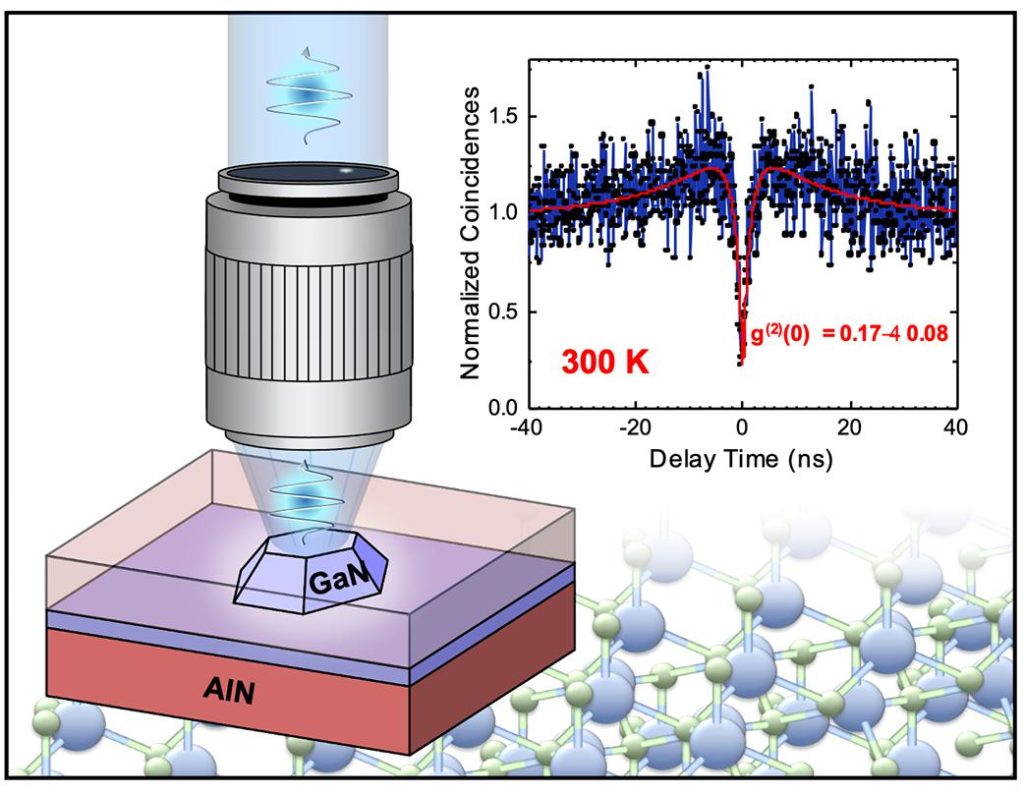In the second quantum revolution framework, single-photon emitters (SPEs) have emerged as an important building block for the implementation of fast-operating quantum devices. For such use, an ideal SPE should allow for the production of bright photon streams of high purity along with on-chip integration capabilities for industrial purposes.
There have been promising candidates in a wide range of solid-state systems. But, they some localized defects in 2D and 3D semiconductor materials, such as low reliability and efficiency.
Scientists at EPFL have now developed ‘bright and pure’ SPEs based on wide-bandgap semiconductor quantum dots grown on cost-effective silicon substrates. Those quantum dots are gallium nitride and aluminum nitride (GaN/AlN).
Along with featuring single-photon purity of 95% at cryogenic temperatures, it maintains excellent good resilience at higher temperatures, with a purity of 83% at room temperature.
The SPE also shows photon emission rates up to 1 MHz while maintaining a single-photon purity of over 50%.

Johann Stachurski, the Ph.D. student who investigated these quantum systems, said, “Such brightness up to room temperature is possible because of the unique electronic properties of the GaN/AlN quantum dots, which preserves the single-photon purity due to the limited spectral overlap with competing for neighboring electronic excitation.”
Scientists noted, “A very appealing feature of GaN/AlN quantum dots is that they belong to the III-nitride semiconductor family, namely that behind the solid‐state lighting revolution (blue and white LEDs), whose importance was recognized by the Nobel prize in Physics in the 2014.”
“It is nowadays the second semiconductor family in terms of consumer market right after silicon that dominates the microelectronic industry. As such, III-nitrides benefit from a solid and mature technological platform, which makes them of high potential interest in developing quantum applications.”
In the future, scientists will determine if this platform can emit one photon and only one per laser pulse, which is an essential prerequisite to determining its efficiency.
Scientists noted, “Since our electronic excitations exhibit room temperature lifetimes as short as 2 to 3 billionth of a second, single-photon rates of several tens of MHz could be within reach. Combined with resonant laser excitation, which is known to improve single-photon purity significantly, our quantum-dot platform could be of interest for implementing room-temperature quantum key distribution based on a true SPE, as opposed to current commercial systems that run with attenuated laser sources.”
Journal Reference:
- Johann Stachurski, Sebastian Tamariz, Gordon Callsen, Raphaël Butté, Nicolas Grandjean. Single-photon emission and recombination dynamics in self-assembled GaN/AlN quantum dots. Light: Science & Application 28 April 2022. DOI: 10.1038/s41377-022-00799-4
